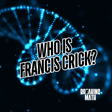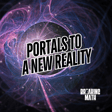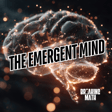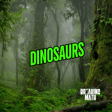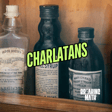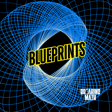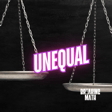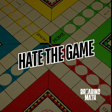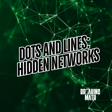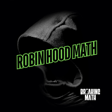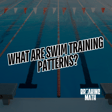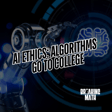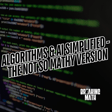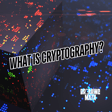Introduction to Radiation and Dosimetry
00:00:00
Speaker
Welcome back to Breaking Math, the podcast where we uncover science, technology, and mathematics shaping the future. I'm your host, Autumn Feneff. Today, we're delving into the world of radiation and dosimetry, where precise measurement is critical for both industry applications and public safety.
Radiation in Cancer Treatment and Food Safety
00:00:19
Speaker
From treating cancer with radiation to ensuring the food we eat is free from harmful pathogens, radiation plays a central role in modern science and industry.
00:00:30
Speaker
But how do we ensure that the right amount of radiation is used? Enough to be effective, but not so much that it becomes dangerous.
Understanding Dosimetry and Industry Impact
00:00:40
Speaker
That's where the science of dosimetry comes into play.
00:00:43
Speaker
Dosimetry is the measurement and calculation of radiation doses absorbed by matter, and its a field influences a wide range of sectors. In the food industry, radiation is used to control foodborne pathogens,
00:00:58
Speaker
and extend the shelf life of our products. Precise measurements of radiation doses are not just important, but they are essential to ensuring the safety and effectiveness.
00:01:12
Speaker
At the forefront of this field is the National Institute of Standards and Technology, or NIST, NIST plays a key role in developing and maintaining the standards used for radiation measurement across different industries. Through programs like the High Dose Dossimetry Program, NIST provides calibration services that ensure the accurate measurement of radiation, enabling industries to safely use ionizing radiation in various applications.
NIST's Role in Radiation Standards
00:01:41
Speaker
Today, I have the privilege of speaking with Dr. Ileana Pezos, a research chemist at NIST who works in the Physical Measurement Laboratory in Gatesburg, Maryland. Dr. Pezos is an expert in high-dose dosimetry, a critical area that supports towards the safe use of radiation in a wide range of industrial processes. Her work ensures that tools and systems used to measure radiation are precise and reliable, which is especially important when dealing with high levels of ionizing radiation.
00:02:13
Speaker
One of the areas Dr. Pezos makes significant contributions is through NIST's High Dose Dosimetry Program. This program supports industries like medical equipment sterilization and industrial food processing by ensuring the radiation doses used in these processes are calibrated to the highest standards.
Dosimetry in Food Safety and Industry Applications
00:02:33
Speaker
In food safety, accurate dosimetry ensures the absorbed radiation is high enough to deactivate harmful bacteria like salmonella and E. coli without compromising the nutritional value of the food.
00:02:46
Speaker
Beyond her work in high-dose dosimetry, Dr. Pezos is also involved in the research through the Photonic Dosimetry Project at NIST. This project aims to develop micron-scale radiation sensors that could revolutionize how we measure radiation at very small scales. The development of these tiny sensors could open avenues for more precise dosimetry.
00:03:11
Speaker
particularly in applications where space and size are limitations, such microelectronics and advanced medical technologies.
Innovations in Radiation Measurement
00:03:20
Speaker
In this episode, we'll be discussing with Dr. Pezos how dosimetry impacts the safety and effectiveness of radiation across industries, and how NIST's work helps set the global standard for radiation measurements.
00:03:34
Speaker
We'll also learn more about the challenges in ensuring that calibration services remain accurate in high-dose environments, where even slight deviations can have significant consequences. As the world continues to adopt new technologies that rely on precise radiation measurement, such as in the fields of energy, space exploration, and even material science, the importance of accurate dosimetry continues to grow.
00:04:01
Speaker
Dr. Pezos' research and services offered by NIST help ensure that we can continue to use radiation safely and effectively in these advanced fields. So without further ado, let's welcome Dr. Ileana Pezos to the show and explore the world of high-dose symmetry, food radiation, and the cutting edge of research being conducted at NIST to ensure our safety in an increasingly technological world.
00:04:36
Speaker
Hi, Eliana. Thanks for coming on Breaking Math. How are you doing today? I'm doing very well. Thank you. Now, tell us a little bit about yourself, your background, and your work. Yeah, well, thank you for having me, and this is such a wonderful introduction. i and i earned my undergraduate degrees in chemistry and mathematics, and then I followed that with my PhD in physical chemistry from the University of Pennsylvania.
00:04:58
Speaker
After completing my doctorate, I conducted postdoctoral research at the University of Maryland. where I focused on using ionizing radiation to modify materials for engineering applications.
00:05:08
Speaker
At NIST, I helped develop calibration standards and methodologies to support industries and research communities that rely on precise radiation dosimetry. What drives me is the opportunity to bridge fundamental science with practical applications, helping ensure public safety and technological innovation.
00:05:27
Speaker
I'm excited to share my work and how it impacts industries and lives worldwide. It's super exciting. So tell us about the basics of dosimetry and how it plays a role in various radiation applications.
00:05:41
Speaker
I know it's everything from medical therapies all the way to industrial processes and even phytocampus. Food? Yeah, of course. I'd be happy to explain. So, dosimetry is the science of measuring and assessing the dose of radiation absorbed by a material. Accurate radiation measurements are essential for ensuring safety and effectiveness across across a wide range of applications.
00:06:03
Speaker
many of which you mentioned
Global Standards and Calibration Challenges
00:06:04
Speaker
earlier. Dosimetry is used while sterilizing medical equipment, using food irradiation to enhance safety and extend shelf life, and modifying materials for engineering purposes.
00:06:13
Speaker
At NIST, our primary role in dosimetry is to establish and maintain the s SI unit of absorbed radiation, which is the GRA, which represents the energy de deposit ah deposition in materials,
00:06:25
Speaker
which is measured by joules per kilogram, through the calibration program at NIST. I then disseminate these accurate measurements to industries that rely on ionizing radiation in their manufacturing and research.
00:06:37
Speaker
Also, I participate in international comparisons to ensure that our standards are consistent with those of other countries. This global alignment is crucial for industries and regulatory bodies worldwide.
00:06:48
Speaker
I also contribute to standard organizations helping to set guidelines that maintain uniformity and accuracy in dosimetry practices. So if I remember correctly a little bit about your background, high-dose dosimetry seems to be at the core for some of your work at NIST. Now, could you describe what it involves and why it's critical for industries that are relying on ionizing radiation? Yeah, of course. So high dose dosimetry focuses on measuring and calibrating extremely large amounts of radiation. So far beyond what we encounter in everyday life. But to put it in perspective, let's talk about everyday life. So we live in a radioactive world. We have a small amount of radiation that we experience from the sky, from the ground, from everything around us, from the chemicals, the radioisotopes in our bodies and and around us. We refer to this as the background dose, and you get a background dose every day, and and you can add it up and refer to it as your annual background dose or your daily one. So a dental x-ray, for example, is about half the amount of radiation that you would get in one single day.
00:07:53
Speaker
Diagnostic imaging, such as CT scans, that involves radiation ah doses about 500 times what you get in a normal daily amount of background dose. Radiation therapies for cancer patients delivers large doses, but it's all targeted specifically to the tumor, so it's a lot higher. That's approximately 5 million times higher than the average daily background dose, but that's needed to kill the tumor. For the processes like sterilizing medical equipment and the food irradiations that we're talking about today, that's 1 to 10 billion times higher than the background rate radiation levels. So it's a lot.
00:08:33
Speaker
And I sometimes even work up to 10 trillion times higher than normal background doses. So it's a lot. And these numbers really highlight how critical precise dosimetry is for these high dose applications.
00:08:45
Speaker
Without accurate measurement and controls, it would be impossible to use radiation safely and effectively. Let's dive deep a little bit into some of the industrial applications and safety. Industrial radiation processing, including sterilization and material testing, relies heavily on accurate dosimetry.
00:09:04
Speaker
Can you detail some of how NIST's high-dose dosimetry program supports these industries and what kind of calibration services are provided? course, course. So we provide calibration services for dosimeters. Dosimeters are devices that are used to measure radiation doses.
00:09:23
Speaker
There are two primary ways that we, NIST, support companies in ensuring the accurate radiation measurements. One, we irradiate dosimeters. We irradiate a company's dosimeter to known doses and send it back to them, which allows them to perform their own measurements on those irradiated dosimeters.
00:09:40
Speaker
This ensures that their irradiations are reproducible and accurate, which is critical for maintaining consistency in their standards. Also, you can use NIST dosimeters. So I would send NIST dosimeters to the company. The company would irradiate them and return them to me.
00:09:55
Speaker
I would then read it and report back the doses that they've received. and that provides an independent verification of their process. These measurements are crucial for industries as they validate and monitor their radiation processes within a quality system.
00:10:09
Speaker
It's essential for companies to track radiation doses they apply, not just for internal consistency, but also to demonstrate to external auditors and end customers that they're meeting the regulatory standards.
00:10:21
Speaker
This level of precision and accountability ensures that the correct amount of radiation is being used. So what are some of the key challenges in maintaining accurate radiation dose measurements, whether it's industrial setting or even on a smaller scale level?
00:10:37
Speaker
Yeah, that's a great question. There are a ton of challenges. Both in industry and at NIST, we are constantly evaluating things like dose uniformity, measurement uncertainty, influence factors like temperature, humidity of the dosimeter response, and complex or non-standard irradiation geometries and the shielding from the radiation, and even selecting the dosimetry system.
00:11:00
Speaker
I operate my calibration service in a highly monitored, newly renovated lab. My setup is highly reproducible because it needs to be, and I'm adapting to new requests because of changing technology or new processes all the time.
Food Irradiation and Public Perception
00:11:14
Speaker
In stark contrast, some of the industries that I provide calibrations for um are operating in giant warehouses with very few environmental controls where the dry and wet season or winter and summer have huge environmental influences on the precise measurements.
00:11:30
Speaker
So they're working also with these huge pallets of stacked food on the so or equipment. And so over the decades, this industry and NIST has worked really hard at writing and rigorously maintaining safety and quality controls.
00:11:45
Speaker
to make these measurements as accurate as possible. I don't think people actually realize how much irradiation is in our everyday lives and process like processes, whether it's through sterilization or even food. So people talk about currently like e coli, bacteria, listeria, and our food processes. Yeah.
00:12:09
Speaker
How you folks really go about that? How is radiation used to control food processing? Yeah, so using ionizing radiation in food processing can be an amazing tool. I like to compare food irradiation to milk pasteurization.
00:12:25
Speaker
That ensures that milk ah the milk safety by killing harmful germs that cause illnesses. Although with pasteurization, they use heat rather than ionizing radiation, but the concept's really similar. So for ionizing radiation, the dosimeters are placed near the food while it's being irradiated.
00:12:43
Speaker
Those dosimeters are then measured before the food is released, and can um it makes sure that the food got enough ionizing radiation to get all the benefits, like the extending of the shelf life and eliminating harmful bacteria and parasites.
00:12:57
Speaker
Now, there's often this public concern about safety of irradiated food, but So can you clarify how this process really affects the food and whether it alters its nutritional value or safety?
00:13:11
Speaker
Yeah. Yeah. So really, unfortunately, food irradiation has a really undeserved negative reputation. Many people and instinctively feel that food irradiation is like creepy, often due to these misconceptions like the idea that irradiated food becomes radioactive, which it absolutely, it's untrue. ah This skepticism likely stems from the combination of for science literacy and the portrayal of radiation in pop culture. Movies and TV shows often depict radiation as the cause of an apocalyptic wasteland or it's comically unsafe practices of like Homer Simpson in the nuclear power plant that he works in.
00:13:48
Speaker
or even radiation-induced transformations like the Hulk or Spider-Man. While all of these things are super entertaining, all these portrayals mix fact with a lot of fiction. So the truth is that food irradiation could be a game-changer with the potential to help address food problems global food supply challenges.
00:14:06
Speaker
For example, strawberries that typically mold within a few days, at least in my fridge, they could actually last three weeks or longer if they were irradiated, all while maintaining nearly identical nutritional content.
00:14:18
Speaker
Personally, i would love that because my strawberries mold really quickly. I think they all do. Yeah. But so how does ionizing food, of food, a radiation actually works? So the ionizing radiation, such as gamma rays, X-rays or electron beams, they pass through the food. and The radiation disrupts the DNA of bacteria and other pathogens, rendering them inactive and unable to reproduce.
00:14:41
Speaker
The food itself does not retain the radiation after the process, just like food doesn't retain heat after it's boiled or pasteurized. And let me repeat, the process does not make the food radioactive.
00:14:52
Speaker
So in terms of nutritional value, the radiation has minimal effects on the nutritional content of food. Some sensitive vitamins like vitamin C, they may decrease slightly, but these changes are totally comparable or even less than other preservation methods like canning or cooking. And so from the safety aspect, there's been extensive studies and it's endorsed worldwide by a bunch of organizations like the World Health Organization, who the Food and Agricultural Organization, FAO, and the U.S. Food and Drug Administration, FDA.
00:15:24
Speaker
And there's, again, tons of benefits. It extends the shelf life of perishable food, which reduces waste and it provides a safe way to control foodborne pathogens without the use of chemicals or additives, which I hear about every day in the news. It's really a shame.
00:15:39
Speaker
Yeah. Now, thinking about this from some public perception and misconception, how are you working towards ensuring transparency and building consumer confidence in the safety of irradiated foods?
00:15:55
Speaker
Yeah, so NIST serves as the nation's metrology institute, which focuses on developing the most accurate measurements and inventing advanced tools to support commerce and industry.
00:16:06
Speaker
I don't personally conduct food safety studies or engage directly in public policy or regulation. My role is critical in ensuring the precise measurement of ionizing radiation. i provide NIST traceable calibrations, which guarantee that the instruments used by other people in food irradiation processes meet rigorous standards of accuracy and reliability. So now out of curiosity, what are some of the biggest misconceptions around food irradiation?
00:16:35
Speaker
how And how can we educate people about this and some of the safety of having these educate the public about its safety and benefits? Yeah. So there's a long list of misconceptions. And the best way to educate people is to be transparent and clear and to believe the health and science professionals.
00:16:54
Speaker
So one of the misconceptions is a radiated food becomes radioactive. When you get a dental x-ray, your teeth don't become radioactive. This is doesn't happen with the type of radiation that's used for food. So that just doesn't happen. Irradiated food is sometimes considered unnatural or harmful.
00:17:10
Speaker
The notion of what's natural often gets tangled up with some emotional response rather than practical realities. You have to look at the big picture. By extending shelf life and reducing foodborne illnesses, food irradiation helps solve real-world problems like food waste and food insecurity.
00:17:27
Speaker
Those are real benefits. The concept of unnatural is kind of odd to me. It can be very natural to get really sick from a foodborne pathogen and bacteria. So bacteria is natural.
Safety in Irradiation Facilities
00:17:39
Speaker
i would prefer nutrition and and c nutritious and safe food over a natural death from the food I eat. Yeah. Another misconception is that irradiation creates harmful chemicals. ah There's a small amount of change that happens in food after irradiation, but they're very similar to the changes that happen when you cook, can, or freeze food. So they're very comparable. Irradiation leads to environmental harm is another misconception.
00:18:07
Speaker
The facilities are super highly regulated. It ensures this worker safety and the safety to the public. So they're actually quite environment mind environmentally friendly.
00:18:18
Speaker
Isn't there some interesting fun fact about bananas and radiation? Well, bananas are naturally radioactive, but just a little. um And it's because of the potassium. a Potassium has a radioisotope that is giving off radiation. and And so we're all actually, we all have potassium. If we don't eat enough potassium, that's, we would be missing out on some pretty important ah vitamin. No, it's not vitamins, mineral.
00:18:43
Speaker
Nutrition. Yeah, so, but, like, um we're actually more radioactive and than a banana, but there's this really fun scale called the um scale of ah banana scale of radioactivity, and it puts ah in so the scale of bananas, like, how radioactive...
00:19:03
Speaker
um a day in the life of a typical person, how radioactive is a flight across the country. And it puts it in terms of bananas, which is really fun to do until you get to, and that's kind of what I did with the ratios before, where I was saying it's like,
00:19:20
Speaker
500 times more, 5,000 times more, 10 trillion times more. So it's all like if you aren't scared of a banana, which you shouldn't be, then you shouldn't really be scared of radioactivity because we live and we evolved in a radioactive world.
Dosimetry's Role Across Industries
00:19:35
Speaker
In terms of bananas. Yeah, there's some really fun websites that you can go and you can answer a list of questions like whether or not you live in a brick building and if you live near ah a power plant. and you know, even if you smoke cigarettes, it makes you more radioactive because of all the chemicals in it. Yeah.
00:19:54
Speaker
There's, um we're familiar with the periodic table, but there's actually another table that um radiation scientists use, the radioisotope, and it shows that all the different radioisotopes of of each element and which ones release are unstable and release radiation. Super interesting.
00:20:13
Speaker
If we're looking at stuff for... Cross industry dosimetry. and has a lot of interesting applications. How does your work bridge these different applications and what common challenges are you facing to ensure accurate calibration across diverse fields?
00:20:34
Speaker
Well, good measurement science supports advancements in every field. So when I'm not focused on disseminating the standards we maintain at NIST, I'm working on developing even better ones. this involves collaborate ah This involves me collaborating with my brilliant colleagues here at NIST and in academia to integrate cutting-edge technologies into my work.
00:20:54
Speaker
My goal is to make my these measurements not only more accurate, but also easier and faster to perform. For example, imagine replacing an entire lab of heavy and delicate delicate equipment with a handheld instrument.
00:21:07
Speaker
How transformative would that be? To achieve this, we're leveraging semiconductor technology and DNA metrology to push those boundaries. So can you share some of the examples of the industries that depend most on these calibration services and how errors in radiation measurements could really impact those industries?
00:21:28
Speaker
Yeah. so when I think of this question, I think of a giant pallet of medical equipment running on a conveyor belt in a large sterilization facility. Too little radiation would mean an incomplete sterilization.
00:21:41
Speaker
Getting an infection from medical equipment is pretty much a nightmare situation for everyone involved, the patient, the doctor, the equipment manufacturer. So underdosing is really not what anyone wants.
00:21:54
Speaker
But too much radiation could theoretically degrade some of those sensitive parts. But 5% higher dose wouldn't really do that. The bigger problem with overdosing by the 5%, for example, is that you wouldn't be right dosing. And I mean, you could be delivering the right dose by moving a conveyor belt 5% faster, which would mean that you can sterilize 5% more product every hour of every day. That could be the difference between getting the medical equipment to the hospital and having a critical shortage.
00:22:26
Speaker
And the same could be ah said for food irradiation. You know, if you could run the conveyor belt 5% faster, you could make 5% more food get to where it needs to go. And so Doing the right dosing, which means that you need accurate measurements, is is really what everyone would want to do. Fair enough. i You know what it's like with infection from medical equipment. Yeah.
00:22:52
Speaker
Well, so I think the majority of cases from infections with medical equipment is user error. You know, people don't change their gloves properly. People don't. Like, it's it's usually a user error.
00:23:03
Speaker
But when they do when those things do happen and then they do the investigations and It ends up being, if it ends up being that the sterilization company didn't properly sterilize the equipment, that would be really bad because then it's like, well, we can't even trust that. And so that's what they really want to avoid because if you're getting a knee replacement and...
00:23:24
Speaker
That knee replacement was sterilized and then put inside you, but it wasn't sterilized enough because they didn't follow procedure. They didn't follow quality controls. It could have real consequences.
Advancements in Sensor Technology
00:23:36
Speaker
And that's what everyone wants to avoid with better measurement science. You're involved in some other projects. One was a photonic dosimetry project, which aims to develop micron scale radiation centers.
00:23:53
Speaker
Could you tell us about some of this cutting edge research that you're doing and the potentials that it has? Yeah, this technology would potentially shrink the sensor size to a ah size of a single cell, which would enable extremely high resolution dose measurements.
00:24:09
Speaker
This level of precision would be invaluable for applications involving things like non-uniform beams of ionizing radiation. What am I talking about? Well, one example is where this where this would be incredibly important important is in cancer treatments.
00:24:25
Speaker
You use highly focused beams to deliver intense doses of radiation to very small targeted areas. You can even try to outline the shape of the tumor. um And really, you want all the dose in the tumor and none of it to get like, you know, to your heart or other organs.
00:24:41
Speaker
So currently, it's nearly impossible to directly measure these doses at such a fine scale. While significant progress has been made in theoretically calculating these doses, the ability to validate those calculations with precise measurements is something the field has really wants. So achieving this breakthrough could greatly enhance the accuracy and the effectiveness of radiation therapies.
00:25:04
Speaker
And there's like a whole list of other applications, but it's It would be really cool to get this. Now, out of curiosity, if we're looking at global collaborations, especially with food and ah radiation therapy being such a global concern, how are you working on sets of international how are you working with international organizations to set these standards across borders?
00:25:36
Speaker
Yeah, you're right. We're working with international organizations, and that's really, really important. So we work closely with international metrology institutes, such as the International Atomic Energy Agency, the IAEA, the International Radiation Association, IIA, the International Bureau of Weights and Measures, BIPM,
00:25:57
Speaker
We also work with ASTM, an international standards organization. These partnerships focus on developing and comparing and aligning high-dose radiation measurement standards to ensure consistency and traceability across borders. So that works really important.
00:26:11
Speaker
Now, how do these standards help ensure radiation calibration is aligned around the world? So you have industries such as food safety where public trust is actually really vital. Yeah, so NIST participates in key comparison exercises with other national metrology institutes to validate and benchmark the measurement techniques.
00:26:34
Speaker
These comparisons help ensure that measurements performed in one country align with those in another, fostering trust in global trade and healthcare practices. Now, if we're looking into the future of this work, is there any new radiation technologies that are emerging and in what fields?
00:26:52
Speaker
Yeah. Yeah, there's a lot to be excited for. Miniaturization and high-resolution measurements are really exciting when dosimeters can become smaller and more precise, capable of measuring doses at the cellular or even subcellular level.
00:27:06
Speaker
That's very exciting. That's what we're working towards with the photonic dosimetry. Real-time and wearable dosimetry, there's a lot of groups looking at developing lightweight wearable sensors that can provide real-time dose monitoring in dynamic environments, which is super cool.
00:27:21
Speaker
This is essential for astronauts in space where exposure to cosmic radiation is unpredictable and for workers in nuclear energy and healthcare settings who need continuous continuous monitoring.
Collaborative Innovations at NIST
00:27:33
Speaker
And of course, I'm excited to see the integration of ai and machine learning.
00:27:37
Speaker
But with everything, we have to be really cautious when relying too much on that. Of course, because... With machine learning and AI technologies, there's always going to be some sort of hiccup.
00:27:49
Speaker
And it's what you train the machine to do. Garbage in, garbage out. Yep. So are there any new areas of research that at NIST or in your work, other side projects that you are excited about? Yeah, well, I'm pretty enthusiastic about a lot of things. um Because ionizing radiation damages DNA, like i that was why it's so useful in food radiations and in s sterilization. Yeah. It's the major way that it kills bacteria and cancer.
00:28:22
Speaker
I'm excited about the collaborative research with the DNA metrology groups here at NIST. So out of curiosity, what initially drew you to this field and what motivates your work?
00:28:36
Speaker
Yeah, working at NIST is deeply meaningful and impactful
Personal Stories and Real-life Impacts
00:28:40
Speaker
to me. i was drawn to NIST literally before I was born. My mom actually worked at NIST in the 1970s and then returned to NIST in the 1990s and retired from NIST the month before I was actually hired in my current position.
00:28:54
Speaker
So the breadth and the importance of the work here really amazes me and and it's always very exciting. um One of the stories that I have about how my actual work is super meaningful to me is um the birth of my first child, actually.
00:29:12
Speaker
So I, the labor was not going well. And so it ended up that I needed a C-section, which I was not excited about. Uh, anyone who's had the experience, they they everyone has their own fun, really fun birth story. But for a C-section, you're in a room with like 30 other people, doctors, nurses, assistants, some of them for me, some of them for the baby.
00:29:35
Speaker
um But it's a lot of people and it's kind a it's a kind of a tense situation um where you're worried about all the outcomes and so I was looking around the room looking at all the people that were doing things to make sure that I lived and that my baby lived and ah when I was looking around the room I saw the logo of a company that I do calibrations for so at that very moment uh I had
00:30:06
Speaker
ah At that very meaningful moment of my life and my first baby's life, I felt a huge sense of relief that I live in a nation with such rigorous safety and quality standards.
Conclusion and Encouragement for Curiosity
00:30:19
Speaker
And I felt that the reach of my work in everyday lives, including my own, um and and that was really impactful. And so it it really changed, like, um my mood.
00:30:32
Speaker
during that really weird time to be. um So that's, that's my story connecting my work to my daily life.
00:30:43
Speaker
I think that changes the narrative a lot. It's like, oh, look what I'm doing right now. And I'm in the middle of labor. Sorry, yeah folks, to anybody who's listening and you're sensitive to these topics.
00:30:54
Speaker
Yeah. But it really just draws in ah the humanity and our work and the impact of what we do. yeah goes right too, right?
00:31:06
Speaker
And as scientists and as researchers, you're able to ah actually see what we do and how that plays a critical role in our everyday lives.
00:31:17
Speaker
Now, is there anything that you want us to take away from this research or this episode in general? Yeah, I think the main takeaway from this research is that measurement science is at the heart of innovation and safety in fields that impact all of our daily lives, all the way from health healthcare to food processing to space exploration.
00:31:40
Speaker
i just wanted to say thank you for coming on Breaking Math today. it was a pleasure having you on the podcast. Yes, thank you so much. It's a pleasure sharing my work with you.
00:31:54
Speaker
And for listeners, ah just remember that radiation and ah all the metrology behind it is in your everyday life. So when in doubt, stay curious.
00:32:08
Speaker
Until next time on Breaking Math.


